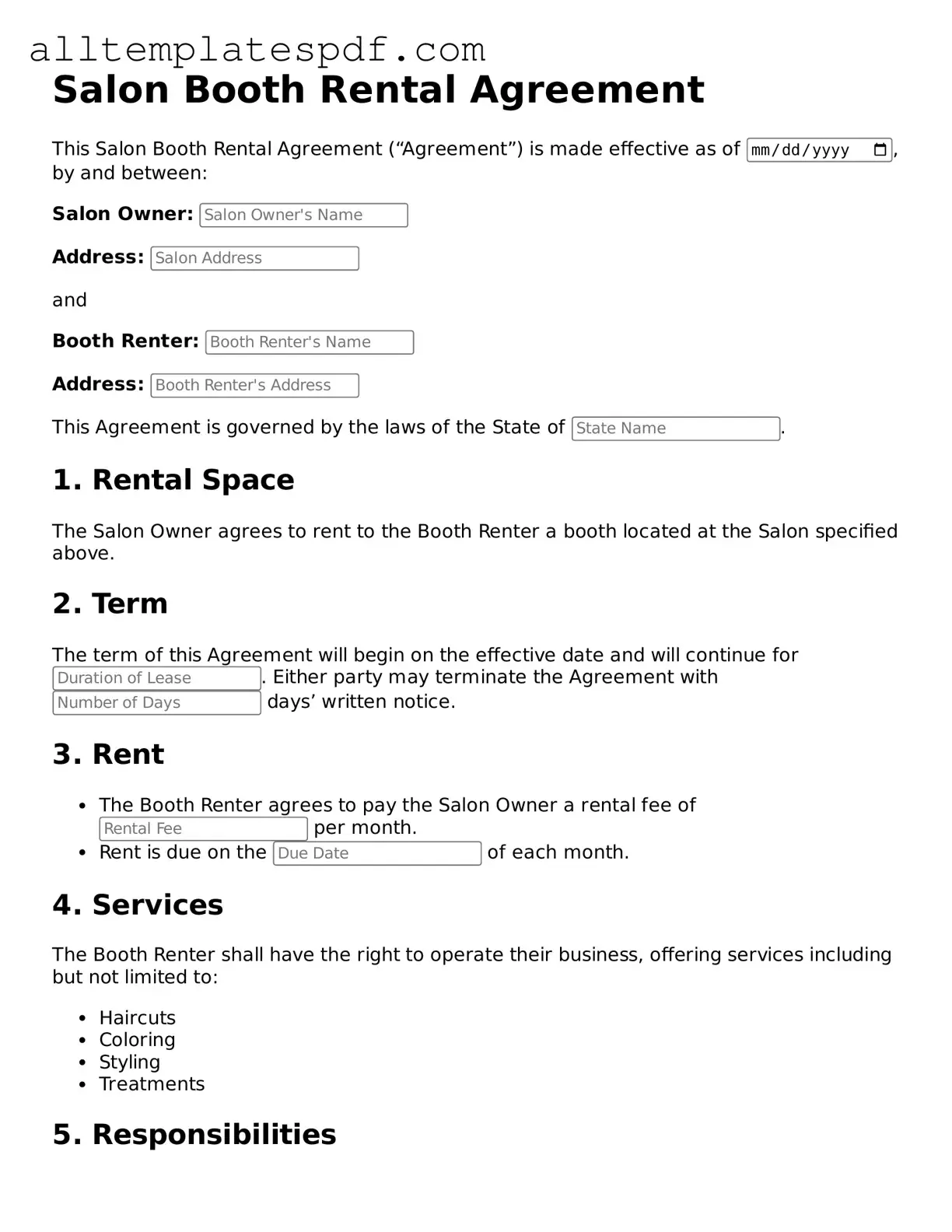When completing the Salon Booth Rental Agreement form, individuals often overlook important details that can lead to misunderstandings or disputes. One common mistake is failing to provide accurate personal information. This includes not only names but also contact details. Incorrect information can result in difficulties when trying to reach the individual or enforce the agreement.
Another frequent error is neglecting to read the entire agreement before signing. Many people may rush through the process, missing critical clauses or obligations that could impact their rental experience. Understanding the terms is essential for both parties to ensure a smooth working relationship.
Some individuals also forget to clarify the rental terms, such as the duration of the lease and payment schedules. Ambiguities in these areas can lead to confusion later on. Clearly stating the start and end dates, as well as the frequency of payments, helps to prevent potential conflicts.
Additionally, people sometimes fail to discuss the responsibilities related to utilities and maintenance. Without clear communication about who is responsible for what, disputes may arise over unexpected costs or maintenance issues. It is advisable to outline these responsibilities in the agreement.
Another common oversight is neglecting to include any special provisions or requests. If there are specific needs or conditions that the renter wants to address, these should be documented in the agreement. Leaving them out can lead to misunderstandings or unmet expectations.
Finally, individuals may not keep a copy of the signed agreement for their records. Retaining a copy is crucial for future reference and can serve as evidence if any disputes arise. Ensuring that both parties have a signed copy helps to maintain transparency and accountability.
